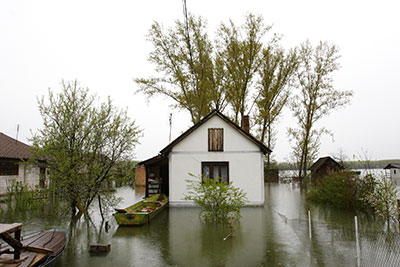 Floodwater can be toxic, so precautions need to be taken to prevent illness. There are special ways of handling cooking utensils like pots and pans as well as food that have been exposed to floodwater.
Floodwater can be toxic, so precautions need to be taken to prevent illness. There are special ways of handling cooking utensils like pots and pans as well as food that have been exposed to floodwater.
According to the Food Safety and Inspection Service of the U.S. Department of Agriculture, you should not eat any food that has come in contact with floodwater. Any food that is not in a waterproof container should be discarded. This includes any food with screw-on caps, snap lids, pull tops and crimped caps (like soda bottles). Any food in cardboard containers, such as infant formula and juice boxes, should be also discarded. Home-canned foods exposed to floodwater should be thrown out because the area under the seal of the jars cannot be properly disinfected.
The only food that can be saved if exposed to floodwater is commercially prepared foods in metal cans or retort pouches. Examples of retort pouches include the ones that tuna fish and juice drinks are in. Special care must be taken before you open the containers, though:
- Remove the labels if they are removable.
- Wash the cans or pouches in hot, soapy water, brushing away any dirt or silt. Then rinse them in water that is safe for drinking.
- Sanitize the containers in one of two ways:
- Place in water and bring to a boil; boil for two minutes
- Place in a freshly made solution of one tablespoon of unscented liquid chlorine bleach per gallon of drinking water (or the cleanest water available) for 15 minutes
- Air-dry the cans or pouches for at least one hour before opening or storing.
- Use a marker to relabel cans.
Pots, pans and any other dishes or utensils that have been exposed to floodwater should be washed in hot, soapy water and then rinsed. They should then be sanitized by boiling them in clean water or immersing them in a solution of one tablespoon of unscented liquid chlorine bleach per gallon of the cleanest water available for 15 minutes. To clean countertops or other surfaces, wash them with hot, soapy water and then rinse. Sanitize them with the drinking water and bleach solution as above, and let them air dry.
Don’t take any unnecessary risks with foods that have been in a flood. When in doubt, throw it out!